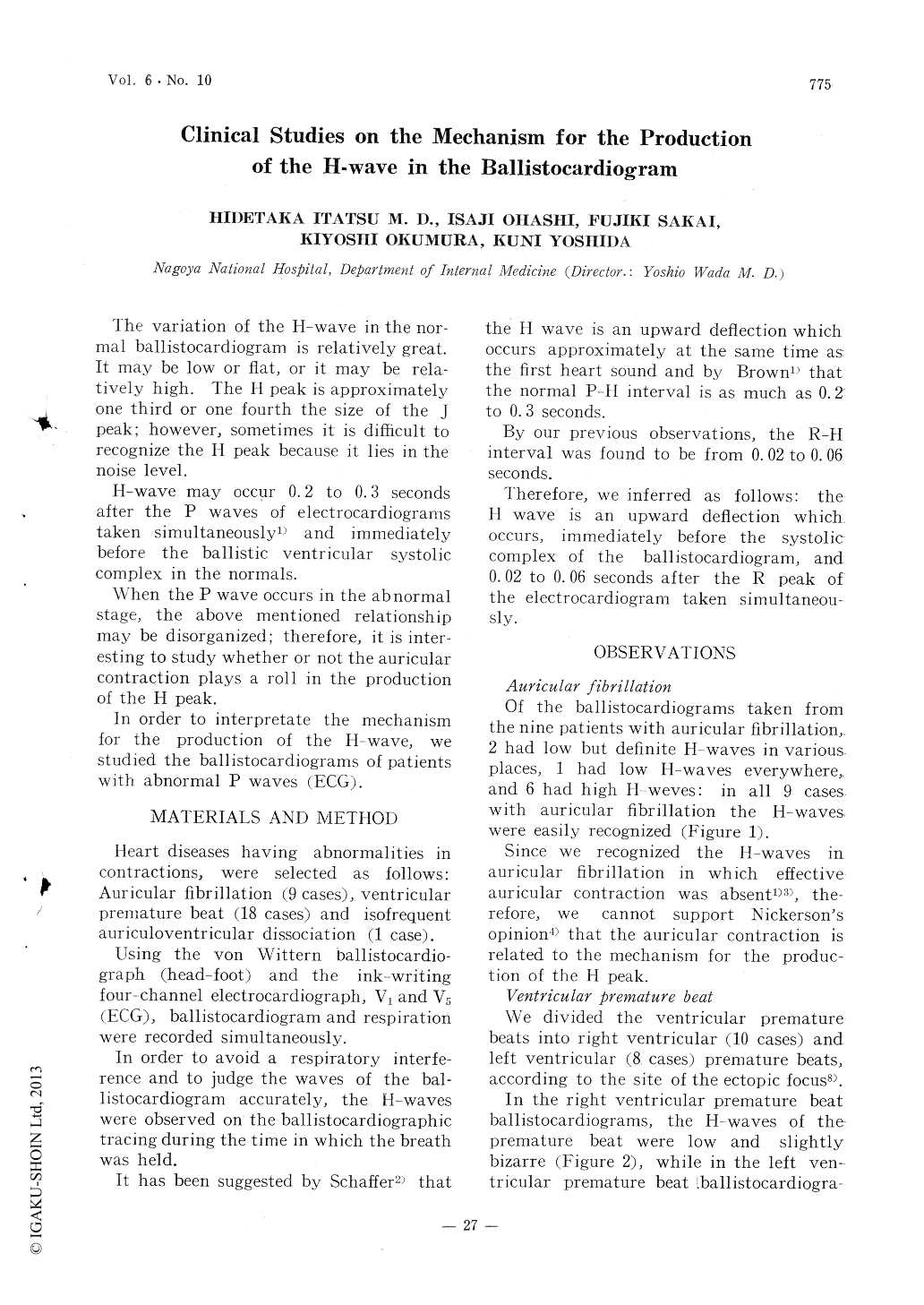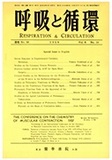- 有料閲覧
- 文献概要
- 1ページ目
It is interesting and important for the analysis of the ballistic wave to determine whether or not the H-wave is produced by auricular contraction.
Nickerson4) has reported that the produ—ction of the H-wave may be relateed to auricular contraction.
Hamilton6) has described that the H-wave is initiated by the apex thrust which oc—curs during isometric contraction.
Brown1) said shat the apex thrust and the right auricular systole play, a role in the production of the H peak, and it has been suggested by Schaffer2) that some of the factors which are thought to be res—ponsible for the H-wave are: auricular contraction, apical thrust, and downward displacement of blood in the inferior vena cava.
Using a high-frequency table, Shimizu and Akita7) have reported as follows: the H-wave consists of two upward deflections. which are approximately the same in magnitude but the initial deflection is not as sharp as the 2nd deflection.
The initial deflection may be due to the abrupt deceleration of the inflowing blood and the occulsion of the semilunar valve, while the 2nd deflection may be caused by the apex thrust which occurs during isometric contraction.
We conclude that the H-wave may not be due to auricular contraction but to the apical trust during ventricular contraction, since it was possible for us to obsecve the H wave in the auricular fibrillation in which effective auricular contraction is absent, and in the ventricular premature beat and the isofrequent auriculo-ventri cular dissociaiion, in which the preceeding auricular contractions are absent.

Copyright © 1958, Igaku-Shoin Ltd. All rights reserved.


